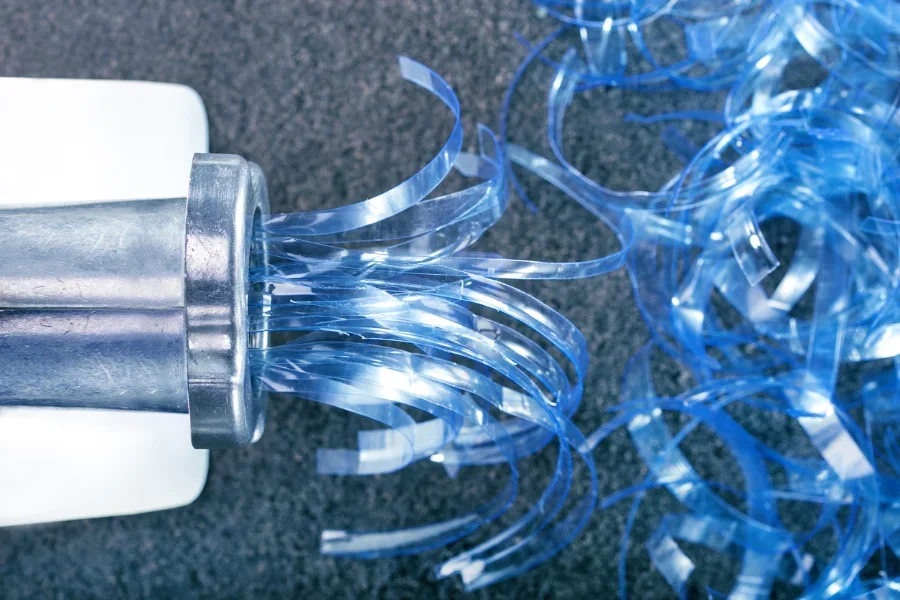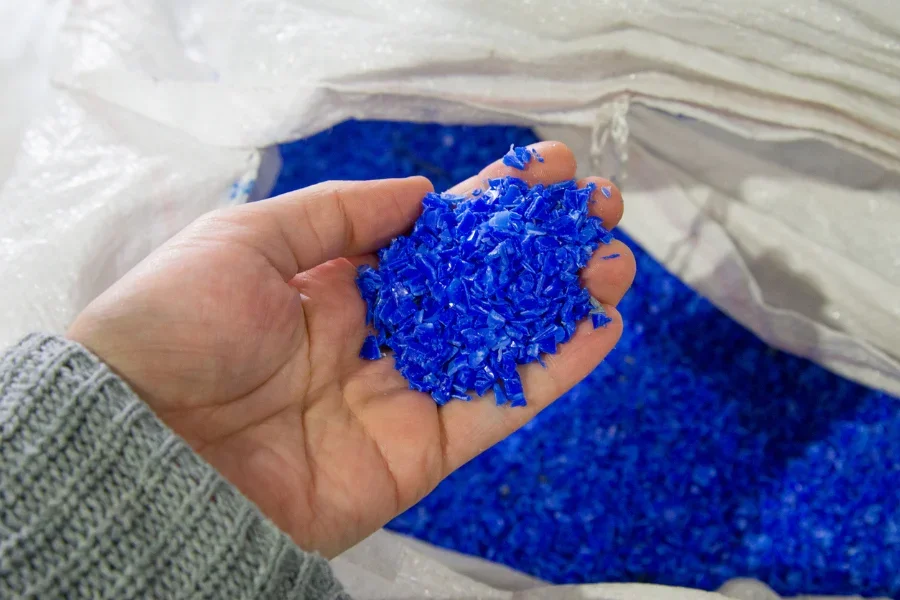By 2050, an estimated 56 gigatons of carbon will be released during the production of plastic, which is over 50 times more than the emissions from all of the coal power plants in the United States. However, the growing trend of plastic recycling machines has brought a huge impact on the environment.
The plastic recycling industry is currently seeing a large entry of businesses and entrepreneurs. Unfortunately, one of their problems is that they don’t know which plastic recycling equipment is best for their needs.
This article will discuss the tips for selecting plastic recycling machines and the varieties so businesses can make better choices on suitable plastic recycling machines.
Table of Contents
Overview of the global plastic industry market
4 selection tips for plastic recycling machines
Types of plastic recycling machines
Conclusion
Overview of the global plastic industry market
The global valuation of the plastic processing machinery market was estimated at US$ 33.4 billion in 2021. The market size is expected to rise to US$ 44.3 billion, growing at a CAGR of 4.8% from 2021 to 2027.
The growth of the plastic machine market is fueled by global industrialization, which has led to the high production of consumer goods and electronics. More technological advancements, such as 3D printing, have also driven the growth of plastic processing machinery.
Other drivers influencing the massive growth of plastic recycling equipment include the increasing demand for plastic packaging in the food and beverage industry and government agencies that advocate for eco-friendly packaging products.
4 selection tips for plastic recycling machines
Material to be recycled
When choosing plastic recycling machinery, businesses should consider what plastics they need to recycle. Some plastics may need one type of plastic processing, while others require complicated processing.
The varieties of recyclable plastics include polyethylene terephthalate (PET), high-density polyethylene (HDPE), low-density polyethylene (LDPE), and polypropylene (PP). PET recycling machines are commonly used for making soda and water bottles because of the clear nature and high resistance to cracking of the material.
Each type of plastic material has a specific recycling machine. HDPE machines make plastic bottles and containers for milk and juices. LDPE machines make plastic films, packaging, and bags. PP is a light and strong plastic with many applications, such as bottles, containers, and packaging.
Output capacity
Output capacity is an important factor when choosing a plastic recycling machine. The higher the output capacity, the more material it can recycle in a shorter time, which means higher efficiency and cost-effectiveness.
Output capacity is also important because it determines the size and type of equipment needed to handle the plastic material. Some machines may require additional parts or modifications to accommodate larger quantities or different plastic materials.
Energy efficiency

Businesses may need to consider energy efficiency when choosing a plastic recycling machine. Energy efficiency affects both the environmental and economic impact of the recycling machine.
A machine that is energy efficient will require less energy to operate, which will reduce the amount of energy consumed and the associated costs.
It will also reduce the amount of greenhouse gases emitted, helping to reduce the environmental impact of plastic recycling. Energy-efficient plastic recycling machines are also more cost-effective, making them a better investment in the long run.
Quality of end product
When purchasing a plastic recycling machine, it is important to consider the quality of the end product. The quality of the end product reflects the efficiency and effectiveness of the machine.
The factors affecting the machine’s effectiveness and efficiency are how well the machine sorts and processes the material and the amount of contamination present in the recycled material.
Poor-quality recycled materials can lead to more energy and resources being used in the manufacturing process and can also lead to a decrease in product performance.
Buyers should choose a plastic recycling machine that manufactures products that are not only sturdy and long-lasting but also appealing to a consumer’s eye.
Types of plastic recycling machines
Size reduction machine
These plastic recycling machines are used to reduce the size of plastic waste so it can be more easily processed and reused. They typically use a combination of shredding, grinding, and cutting to reduce the size of the plastic.
The size reduction process also prepares the plastic for further processing, such as sorting and separation. The type of material and the desired end product size determine the size reduction machine businesses should use. Shredders, cutters, pulverizers, and granulators are all common size reduction machines used in plastic recycling.
Pros
- They make accurate measurements.
- The machines can produce high surface finishes.
- They can crush hard plastic materials.
Cons
- The high pressure and force used when operating the machines pose a risk of injury.
Washing machine
A plastic washing recycling machine is a system used to remove contaminants and dirt from plastic material to increase its value. It begins with crushing machines which break the plastic material into smaller pieces.
The material is then fed through a friction washer for cold water cleansing to remove the contaminants. Afterward, the plastic is passed through a sink-float tank which separates the heavier contaminants from the lighter plastic.
Finally, a mechanical dryer operates as a centrifuge for the plastic, regrind, and mixed plastics, and the wet fractions and fines are mechanically dried.
Pros
- Cleaning improves the service quality of the plastic.
- The machines reduce environmental pollution in the cleaning process.
Cons
- Continuously injecting water into the plastic consumes a lot of water.
- Plastic washing requires intensive labor.
Separating equipment
A separating plastic recycling machine is a device that separates different types of plastic from a mixture. The machine uses advanced technology, such as high-voltage electrostatic separation and machine learning to identify and separate plastics accurately.
The technology makes it possible to separate plastics based on a purer chemical composition than with traditional methods and can also be used to separate plastics by size and shape.
The technology is mainly used for recycling mixed plastics such as PP, PS, PET, PVC, and ABS.
Pros
- The machines can be automated, making the process easy.
- They feature fast sorting speeds.
Cons
- They consume a lot of energy.
Pelletizing machine

A plastic pelletizing machine, also known as a plastic granulator, is a device used to recycle and process waste plastics and turn them into reusable raw materials. The machine is designed to break down plastic scrap into small pellets that can be used to create new plastic products.
A plastic pelletizing machine typically consists of a transmission system, a heating and cooling system, and an extrusion system. The transmission system powers the screw, breaking the plastic scrap into small pellets.
The heating and cooling system ensures that the plastic is plasticized into a uniform melt and then extruded through a continuous die. The mold is used to shape the pellets, and the head is used to cut them into the desired size.
Pros
- The machines are easy to operate.
- They have low energy consumption.
Cons
- Plastic granulators require a huge amount of space to operate.
- They are huge and not portable.
Conclusion
Businesses needing plastic recycling machines should be able to pick which type suits their requirements easily. The tips above provide crucial things to look at when choosing a plastic recycling machine and the different types available. Read this article to discover the latest trends in the plastic industry.



